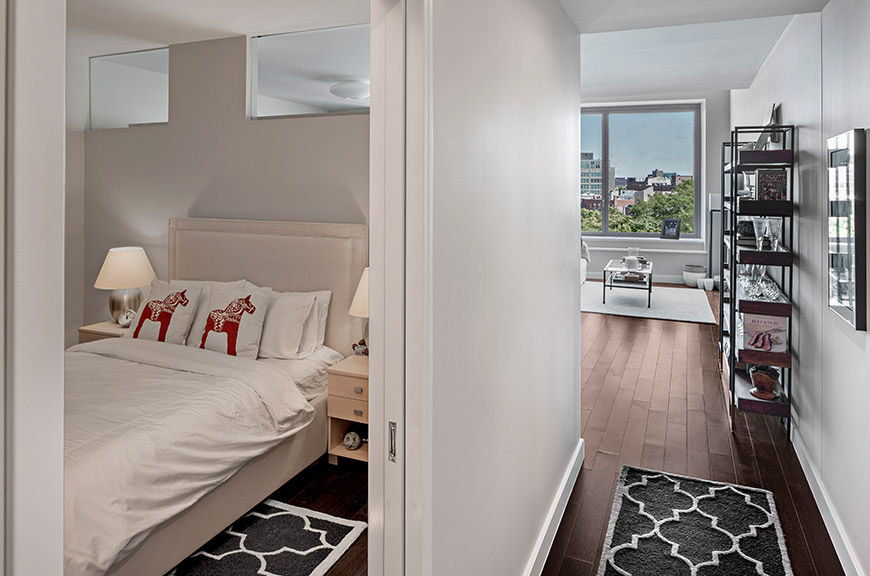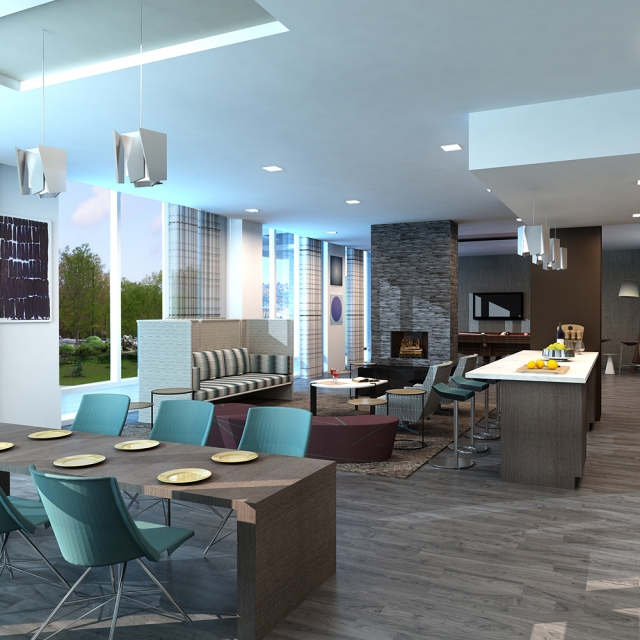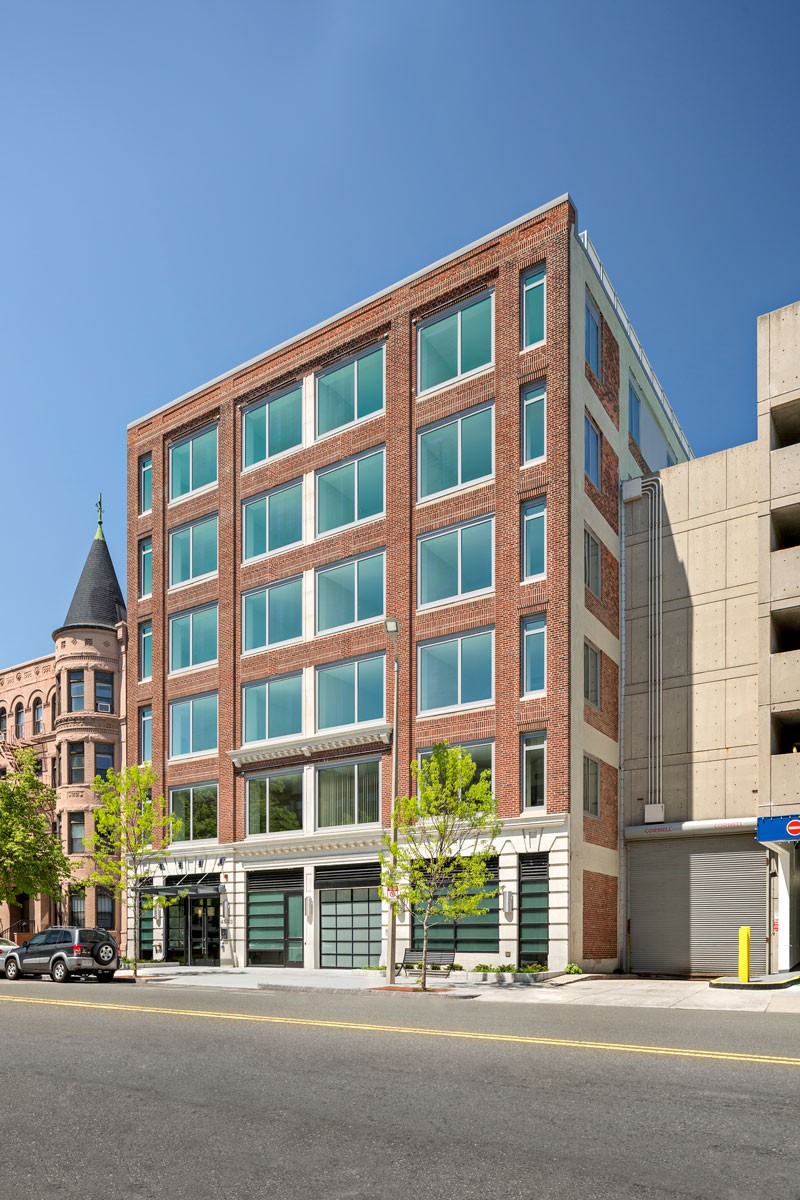Location is everything in real estate, and some locations prove to be more challenging to develop than others. The open lot at 44 Burbank Street in Boston was just such a location. Projects of this nature are very much driven by their context, and provide designers the chance to creatively weave the massing and materials of the building into the existing urban fabric.
These types of developments also have the potential to visually transform neighborhoods, and though the challenges of building in dense urban locations are oftentimes myriad—obtaining proper city approvals, etc.—the benefits can be great for developers and communities alike.
Repurposing existing unused or underutilized facilities is another option that developers have been exploring to cater to those seeking a more urban lifestyle. Symphony Court, in Boston’s Fenway-Kenmore neighborhood, is a dramatic example: The existing structure was a 6-story parking garage, built in 1918. Its conversion into elegant condominiums was transformative, not just for the building, but also for the neighborhood. Adaptive reuse of existing buildings has the added benefit of being a sustainable method of development, which is especially important in an aging and evolving city like Boston.






